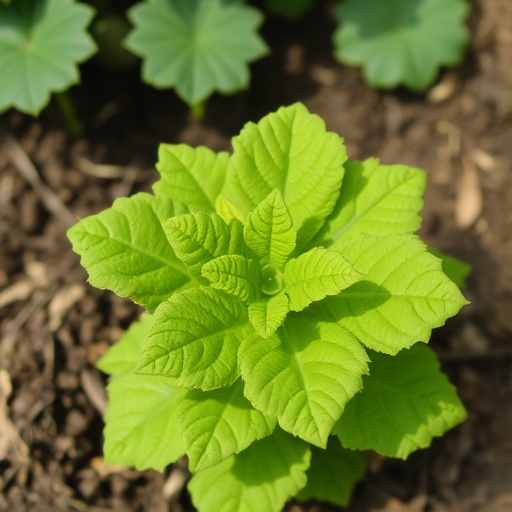In a groundbreaking study that could revolutionize aquaculture practices, researchers have investigated the effects of incorporating cabbage and cauliflower waste meal into the diet of Labeo rohita fingerlings. This project aligns with sustainable aquaculture and waste reduction initiatives, aiming to enhance fish growth, digestibility, and biochemical profiles while reducing the environmental impact of fish farming. Given the alarming rates of fish stock depletion and the unsustainable nature of current aquaculture feeds, the findings could represent a pivotal moment in feeding practices.
The research highlights an innovative and sustainable approach to aquaculture, addressing two pressing issues: the increasing need for cost-effective feeds and the growing volume of agricultural waste. As farmers often face high costs associated with conventional fish feeds, this study advocates for a solution that taps into by-products of vegetable farming. The repurposing of cabbage and cauliflower residues not only serves as a source of nutrition but also helps to manage waste more efficiently, presenting a win-win situation for both aquaculture and the environment.
Conducted at a state-of-the-art aquaculture facility, the study monitored the growth and health of Labeo rohita fingerlings over a controlled feeding trial. These fish, which are a staple in many aquatic farming systems owing to their palatability and fast growth rate, were fed a diet augmented with cabbage and cauliflower waste meal. The researchers meticulously recorded various parameters, including growth rates, feed conversion ratios, and overall health indicators, providing a robust dataset that underscores the dietary enhancements.
The implications of improving growth rates in fingerlings are significant. It means that farmers can achieve higher yield within shorter time frames, significantly impacting the economics of aquaculture. With faster growth, fish can be harvested sooner, effectively increasing turnover and profitability. The utilization of waste products allows these economic benefits to emerge without the pressing environmental costs typically associated with traditional feed sources derived from marine life or unsustainable agricultural practices.
In addition to growth metrics, the research delves into biochemical parameters such as protein levels, fat content, and the presence of essential vitamins and minerals within the fish. These indicators are crucial for assessing the health and nutritional value of the fish produced. The study revealed that the fingerlings fed with the cabbage and cauliflower diet not only exhibited enhanced growth but also demonstrated favorable biochemical profiles, promoting overall well-being.
This study serves to advance our understanding of the nutritional potential of vegetable waste, specifically highlighting the importance of plant-based ingredients in aquaculture feeds. It provides evidence that incorporating such waste products can lead to substantial improvements in the quality of fish output, ultimately benefiting both consumers and producers. The findings could stimulate further research into other vegetable by-products and their applications in aquaculture, potentially setting a precedent for future innovations.
Beyond the immediate benefits observed in growth and nutrition, this research plays a crucial role in addressing broader environmental concerns. Sustainable farming practices are imperative in light of global climate challenges. By reducing dependency on conventional feed sources, this strategy could contribute to decreased overfishing and a more balanced ecosystem. The integration of agro-waste into animal feeds is an essential step toward achieving sustainability in food production systems.
As the aquaculture industry continues to adapt to changing environmental regulations and consumer preferences, studies like this become even more critical. Sustainable practices are increasingly demanded by consumers who are more conscious of where their food comes from and how it is produced. Fish farm operators who adapt and innovate based on such research findings will likely secure a competitive advantage in a rapidly evolving market landscape.
However, it is essential to note that while this research presents promising results, the practical application of these findings requires careful consideration. Variations in fish species, local environmental conditions, and waste composition can affect the outcomes of such dietary changes. Future research should encompass broader studies across different geographical locations and fish species to fully understand the potential of plant-based waste in aquaculture.
As the authors of the study emphasize, collaboration between researchers, farmers, and policymakers is crucial to allow these findings to mature into standard practices. To realize the full potential of integrating agricultural waste into aquaculture, it is vital to foster partnerships across the supply chain. Education and awareness are necessary to encourage adoption, ensuring that farmers are equipped with the knowledge and resources to implement these sustainable practices effectively.
In conclusion, the incorporation of cabbage and cauliflower waste meal into the diets of Labeo rohita presents an exciting opportunity for innovation in aquaculture. The findings of the study not only enhance fish growth and health but also pave the way toward more sustainable practices in the industry. As the world faces ongoing challenges in food security and climate change, research centered around the utilization of waste products holds immense promise in creating resilient food systems.
As we advance, continuing to refine these dietary strategies and promoting plant-based waste materials can potentially alter the landscape of aquaculture. The journey toward more sustainable, eco-friendly farming practices is undoubtedly long, but studies such as these illuminate the path forward, emphasizing the need for further exploration and innovation in fish feed solutions.
Subject of Research: Utilization of Cabbage and Cauliflower Waste Meal in the Diet of Labeo Rohita Fingerlings
Article Title: Correction: Changes in Digestibility, Growth and Biochemical Parameters in Labeo Rohita (Hamilton, 1822) Fingerlings Fed with Cabbage and Cauliflower Waste Meal Containing Diet
Article References:
V., K., Sardar, P., L., M. et al. Correction: Changes in Digestibility, Growth and Biochemical Parameters in Labeo Rohita (Hamilton, 1822) Fingerlings Fed with Cabbage and Cauliflower Waste Meal Containing Diet.
Waste Biomass Valor (2025). https://doi.org/10.1007/s12649-025-03260-w
Image Credits: AI Generated
DOI:
Keywords: Aquaculture, Labeo Rohita, Sustainable Feeding, Plant-Based Nutrition, Agricultural Waste Management, Fish Growth, Biochemical Health, Environmental Sustainability.
Tags: aquaculture facility researchaquaculture waste reductioncabbage and cauliflower waste mealcost-effective fish feeding solutionsenvironmental impact of fish farmingfish nutrition and digestibilityinnovative aquaculture solutionsLabeo rohita growthrepurposing agricultural by-productssustainable aquaculture practicessustainable fish farming practicesvegetable waste in fish feed





